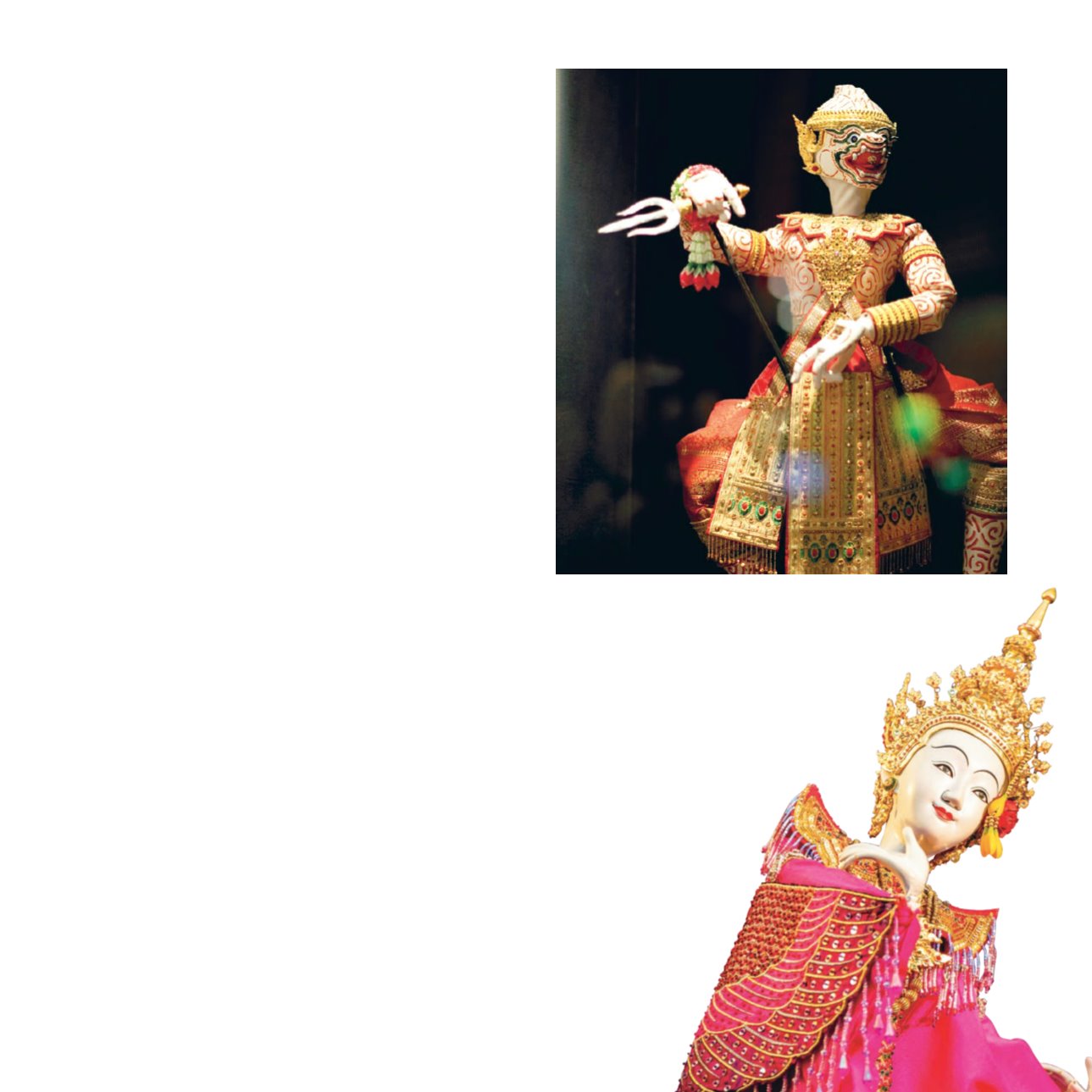

Hun Lakhon Lek
Hun Lakhon Lek presumably started in 1901 A.D. as a one-meter-tall
puppet created by Master Krae Sapthawanit, to imitate Hun Luang (great
puppet) and Hun Lek (small puppet) with the difference in controlling the
puppet and the playing style. Later, Hun Lakhon Lek was inherited by
Master Sakhon Yangkhiaosod, widely known as Joe Louis. He created
a new small puppet theater and develop the playing style to show off
the puppets outside. The audience can see the style of puppeteers
along with the puppet. One puppet is controlled by three puppeteers
and the skills were transferred to offspring. He finally established the first
puppet troupe in Thailand named
“the Troupe of Sakorn Nathasilp
Lakhon Lek, nephew of Khru Krae”
, and the first theatre for small
puppet performances, known as Natayasala Hun Lakhon Lek (Joe Louis)
[Traditional Thai Puppet Theatre (Joe Louis)].
The importance of Thai puppetry is to bring different forms of
national arts and culture together by relying on a skillful sculptor in
making a head and body sculpture, an expert in creating the puppet
mechanic controls, and a competent artisan specializes in making
embroidery costume and apparels. The performance also requires an
excellent puppeteer who has knowledge of dance, music instruments,
literary arts, rhythm and mood of the music to control the show, proceed
the story based on the lyrics and dialogues, especially for Hun Krabok,
which is the combination of several high-class arts, such as architecture,
decorative arts for creation of the puppet theatre and scenes in line
with the story. Therefore, it is indeed a performance that brings several
forms of arts and culture of Thailand to blend together harmoniously.
• In the performance of Hun Lakhon Lek, the audience will
be able to see the puppets and the puppeteers at the
same time. Therefore, it is necessary to use the puppeteers
who are also mastery in Khon theatre.
“
In addition to the Hun Luang which remains to the present
day, the evidence of Thai puppet theatre is visible in the
mural paintings dated back to the reign of King Rama III
at Wat Phra Chetuphon Vimolmangklaram (Wat Pho) and
the craftsmanship from the reign of King Rama IV at the
Wat Thongthammachart, Wat Sommanatwattana in Bangkok,
and Wat Machimimas in Song Khla.
”


















